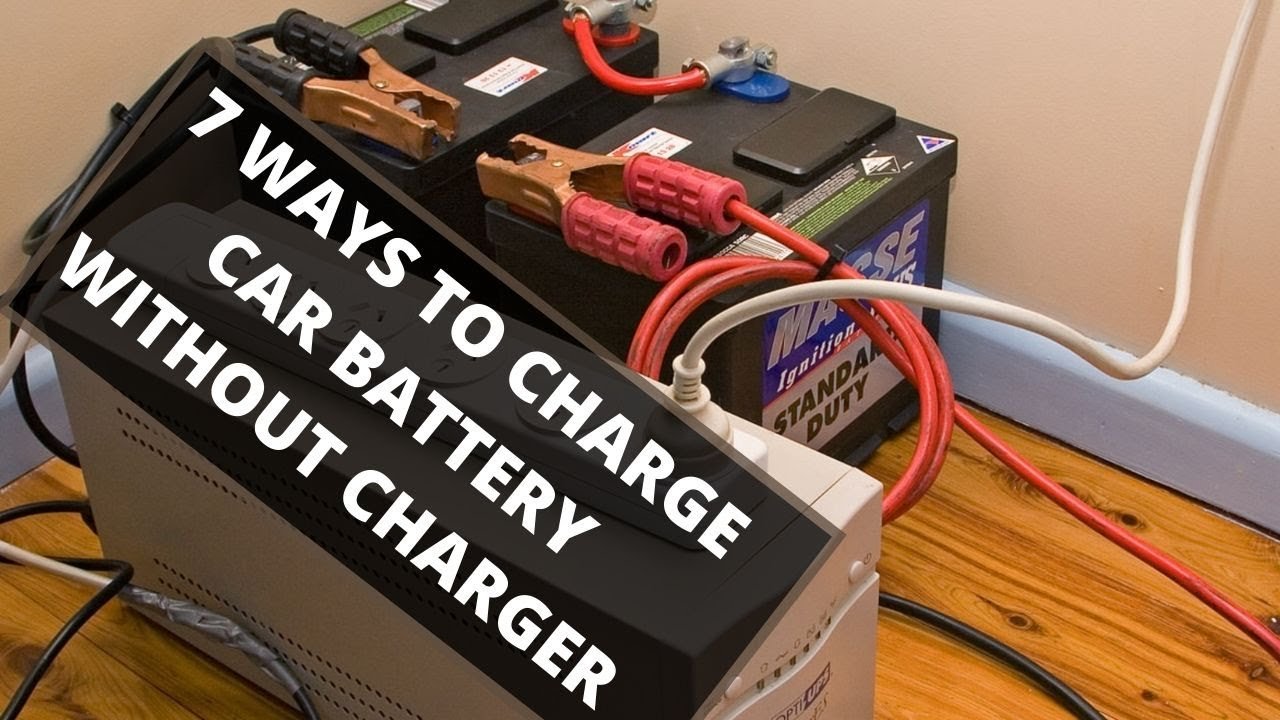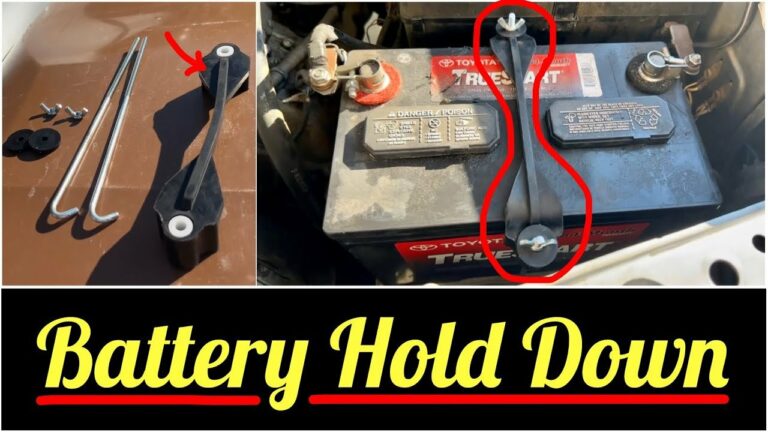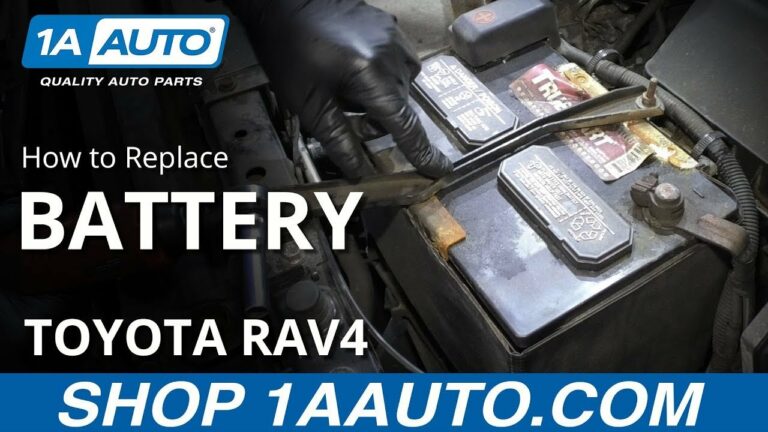How to Charge a Car Battery Without a Charger: Step-By-Step Guide
Looking to charge your car battery but don’t have a charger on hand? No worries! We’ve got you covered. In this article, we’ll show you how to charge a car battery without a charger. Whether you’re facing an unexpected dead battery or simply want to learn an alternative method, we’ve got a solution for you. So, if you’re ready to find out how to charge a car battery without a charger, let’s dive right in.
How to Charge a Car Battery Without a Charger?
Charging a car battery without a charger may seem like a daunting task, but it is possible with the right tools and techniques. In this article, we will explore various methods for charging a car battery without a charger. Whether you’re stranded with a dead battery or looking for an alternative charging solution, these methods will come in handy. Remember to follow safety precautions and consult your vehicle’s manual before attempting any of these methods.
Using Jumper Cables:
One of the most common methods for charging a car battery without a charger is by using jumper cables. Here’s a step-by-step guide on how to do it:
What You’ll Need:
- Jumper cables
- A vehicle with a charged battery
Procedure:
- Position the two vehicles next to each other, ensuring they don’t touch.
- Turn off both vehicles and engage the parking brakes.
- Open the hood of each vehicle and locate the battery terminals.
- Identify the positive (+) and negative (-) terminals on both batteries.
- Connect one end of the positive jumper cable to the positive terminal of the dead battery.
- Connect the other end of the positive cable to the positive terminal of the charged battery.
- Connect one end of the negative jumper cable to the negative terminal of the charged battery.
- Connect the other end of the negative cable to an unpainted metal surface on the car with the dead battery (e.g., engine block).
- Start the vehicle with the charged battery and let it run for a few minutes.
- Attempt to start the car with the dead battery. If it starts, leave it running for a while to allow the battery to charge.
- Disconnect the jumper cables in reverse order.
Push Starting (Manual Transmission Only):
If you have a manual transmission vehicle, you can try push starting it to charge the battery. Here’s how:
Procedure:
- Find a flat, open space where you can safely push your vehicle.
- Make sure the ignition is on, and the car is in second gear.
- Depress the clutch pedal and have someone push the car to gain momentum.
- Once you reach a sufficient speed, release the clutch pedal quickly.
- If the battery has enough charge, the engine should start.
- Let the engine run for a while to charge the battery.
Solar Panel Chargers:
Solar panel chargers are an environmentally friendly option for charging car batteries. They utilize the sun’s energy to generate electricity. Here’s how to use a solar panel charger:
What You’ll Need:
- A solar panel charger suitable for car batteries
Procedure:
- Place the solar panel charger on a flat surface in direct sunlight.
- Connect the positive cable from the charger to the positive terminal of the car battery.
- Connect the negative cable from the charger to the negative terminal of the car battery.
- Ensure the connections are secure.
- Leave the solar panel charger connected for several hours or as recommended by the manufacturer.
- Disconnect the charger and start the car. If the battery is charged sufficiently, the car should start.
Battery Jump Starters:
Battery jump starters are portable power packs specifically designed to jump-start car batteries. They typically come with built-in jumper cables and a battery that can supply enough power to start the engine. Here’s how to use a battery jump starter:
What You’ll Need:
- A battery jump starter
Procedure:
- Ensure the battery jump starter is charged or has sufficient power.
- Position the jump starter next to the vehicle.
- Connect the positive clamp of the jump starter to the positive terminal of the car battery.
- Connect the negative clamp of the jump starter to an unpainted metal surface on the car.
- Turn on the jump starter and attempt to start the vehicle.
- If the battery has enough charge, the engine should start.
Alternator Charging:
In some cases, you can charge a car battery without a charger by using the vehicle’s alternator. However, this method requires some technical knowledge and should be done with caution. Here’s a general guideline:
Procedure:
- Disconnect the negative cable from the battery.
- Identify the positive and negative terminals on the alternator.
- Connect a wire from the positive terminal of the alternator to the positive terminal of the car battery.
- Connect a wire from the negative terminal of the alternator to an unpainted metal surface on the car.
- Ensure the connections are secure.
- Start the vehicle and let it run for a while to charge the battery.
- Disconnect the wires in reverse order.
- Reconnect the negative cable to the battery.
Battery Desulfation:
Over time, sulfation may occur on car batteries, reducing their capacity to hold a charge. Battery desulfation techniques can help restore some lost capacity. Here’s a method you can try:
What You’ll Need:
- Battery desulfator
Procedure:
- Connect the desulfator to the terminals of the car battery.
- Follow the manufacturer’s instructions for the specific desulfator model.
- Allow the desulfator to run for the recommended duration.
- Disconnect the desulfator and check if the battery holds a charge.
Using a Power Inverter:
If you have access to a power inverter and a power source, you can charge a car battery. Here’s how to do it:
What You’ll Need:
- A power inverter
- A power source (e.g., another vehicle’s battery, a generator, or household electrical outlet)
Procedure:
- Connect the power inverter to the power source.
- Connect the positive cable from the inverter to the positive terminal of the car battery.
- Connect the negative cable from the inverter to the negative terminal of the car battery.
- Ensure the connections are secure.
- Turn on the power source, providing electricity to the inverter.
- Leave the battery connected to the power source for several hours or as recommended by the manufacturer.
- Disconnect the inverter and start the car. If the battery is charged sufficiently, the car should start.
Regenerative Braking (Electric Vehicles):
For electric vehicles (EVs) equipped with regenerative braking systems, recovering energy during braking can help charge the battery. Here’s how it works:
Procedure:
- Drive the EV normally, taking advantage of regenerative braking when braking or decelerating.
- Regenerative braking converts kinetic energy into electrical energy, which is used to charge the battery.
- Over time, the battery will gain charge through regular usage of regenerative braking.
Using a Wind Turbine:
In remote or emergencies, a wind turbine can be used to generate electricity and charge a car battery. However, this method requires special equipment and expertise in wind turbine installation. Consult a professional if you plan to implement this method.
Seeking Professional Assistance:
If the above methods do not work or you do not feel comfortable attempting them, it is best to seek professional assistance. A qualified mechanic or automotive technician can help diagnose and resolve battery-related issues. They have the necessary tools and expertise to charge or replace a car battery safely.
Remember, prevention is better than cure when it comes to battery-related issues. Regular maintenance, such as inspecting the battery, cleaning the terminals, and ensuring proper charging, can help prolong battery life and prevent unexpected breakdowns.
7 Ways on How to Charge Car Battery Without Charger
Faqs for How to Charge a Car Battery Without a Charger:
To jump-start a car battery, you will need a set of jumper cables and another vehicle with a charged battery. Connect the positive terminals (+) of the batteries with the red cable and the negative terminals (-) with the black cable. Start the assisting vehicle and let it run for a few minutes, then start your car. Make sure to disconnect the cables in the reverse order.
While it is possible to use a power bank to charge a car battery, it is generally not recommended due to power bank limitations. Car batteries require a significant amount of energy, and most power banks are not powerful enough to provide the necessary charge.
Jump-starting a car battery can be safe if done correctly. It is important to follow proper procedures, ensuring the jumper cables are connected properly and safely. Be cautious of any sparking and keep the cables away from moving parts. If you are unsure, it is recommended to seek assistance from a professional.
Driving the vehicle can help recharge the car battery to some extent, especially if it has been drained due to short-term disuse. However, if the battery is significantly discharged, driving alone may not be sufficient to fully recharge it. It is advisable to use a dedicated battery charger or seek professional help in such cases.
Final Thoughts
How to charge a car battery without a charger? In situations where a charger is unavailable, there are several alternative methods to effectively charge a car battery. One option is to use jumper cables and another vehicle with a charged battery to provide the necessary power. Another method involves utilizing a portable power bank that is specifically designed for jump-starting vehicles. Additionally, solar chargers can be used to harness the power of the sun and charge a car battery. Although these methods can provide temporary solutions, it is important to remember that using a dedicated charger is the most reliable and efficient way to charge a car battery.




